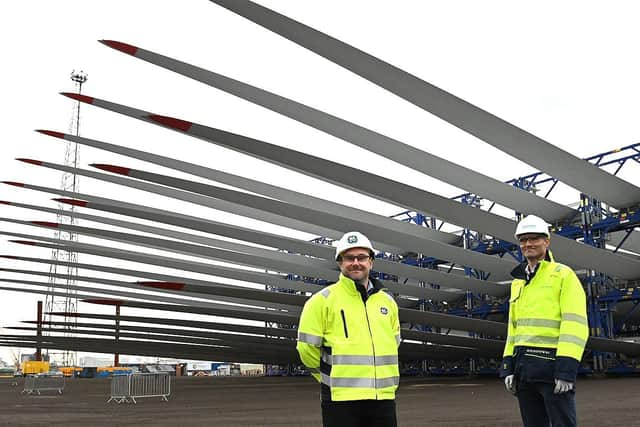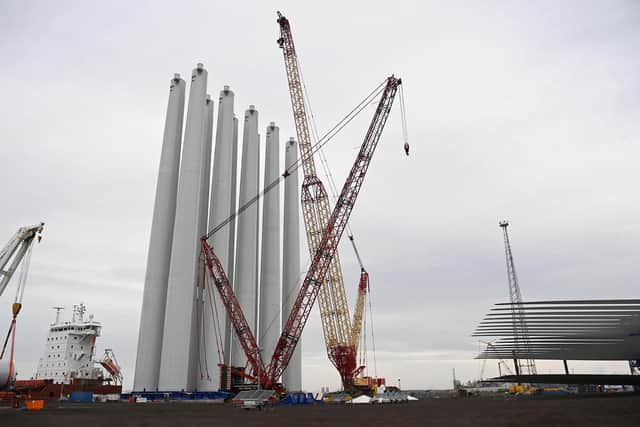Dogger Bank wind farm generates first power as leaders visit marshalling and construction hub in Hartlepool
and live on Freeview channel 276
Able Seaton Port on the outskirts of town is serving as a marshalling and construction hub for all 277 giant wind turbines at the Dogger Bank wind farm being built in the North Sea.
Dogger Bank project director Olly Cass visited the Hartlepool site this week to celebrate the first electricity generated by the project’s ground-breaking turbines being built by renewable energy company GE Vernova.
Advertisement
Hide AdAdvertisement
Hide AdThe first turbine is now transmitting power to the national grid.


Mr Cass said: “It’s a major milestone for the project and for the transition to clean energy that we all want to see.
“Once complete the project will produce electricity amount equivalent to five per cent of Great Britain’s needs.
"That’s equivalent to powering six million UK homes.”
All of the major components of the 13 Megawatt Haliade-X turbines are being brought together by GE Vernova at Able Seaton Port, on Tees Road, and made ready for their final installation out at sea.


Advertisement
Hide AdAdvertisement
Hide AdThe towers, which will stand at around 850 feet, are also being constructed on the site.
Mr Cass added: "This is a fundamental hub for the whole project.”
GE Vernova has been on site in Hartlepool since November last year and employs between 150 and 200 people.
SSE Renewables, lead operator for Dogger Bank’s construction, said the whole project and supply has created or supported more than 2,000 UK jobs, with many based in the North.
Advertisement
Hide AdAdvertisement
Hide AdThe project has special significance for GE Vernova’s Dogger Bank project director Peter Dixon, who lives in Hartlepool.
He said: "For me this is a major achievement, first of all to be able to take part in the project in my own backyard, but then again to be part of something that’s so big in the region.
"We take a lot of pride in making sure our local communities feel the benefit of us being here.
"Hopefully, we leave a legacy as well as Dogger Bank.”
With 272 turbines still to complete, the business is set to remain in town until mid 2026 at least.
Advertisement
Hide AdAdvertisement
Hide AdA single rotation of one of the 350 feet long blades can produce enough clean energy for an average home for two days.
Prime Minister Rishi Sunak has praised the project. He said: “Offshore wind is critical to generating renewable, efficient energy that can power British homes from British seas.
“I’m proud that this country is already a world leader in reaching Net Zero by 2050, and by doubling down on the new green industries of the future, we’ll get there in a way that’s both pragmatic and ambitious.
“That’s why it’s fantastic to see the world's largest wind farm, Dogger Bank, generating power for the first time today from UK waters, which will not only bolster our energy security, but create jobs, lower electricity bills and keep us on track for Net Zero.”